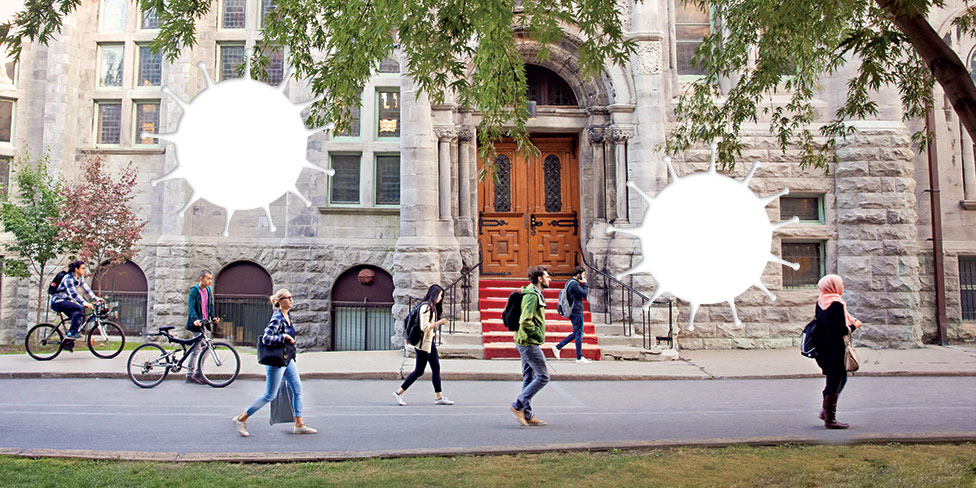Exhausting days, sleepless nights, overwhelming uncertainty and a paramount concern for the welfare of students, faculty and staff. Universities were among the first organizations to shut down in-person operations and pivot rapidly to remote teaching and learning in response to the COVID-19 global pandemic. This unprecedented situation called on the very best that our universities are capable of. These seven stories, drawn from universities across the country and across a spectrum of roles, demonstrate the ingenuity, tenacity and care that administrators, faculty, staff and students showed for one another and their communities through the most challenging episode faced by universities in decades. We asked each individual: When did you realize COVID-19 would have an impact on higher education and your role within it? How did you respond? And what has been your biggest takeaway? These are their answers.
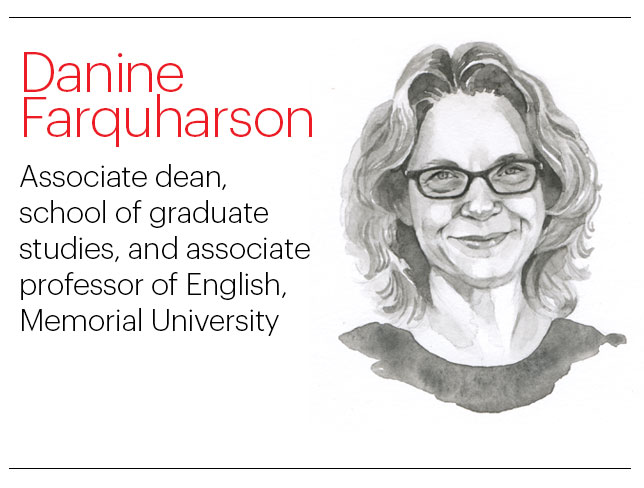
Forty percent of our over 4,000 graduate students are international students. They were a vital source of on-the-ground information in the early days of the pandemic. In early January, Andrew Kim, our director of graduate enrolment services, was in contact with one student in China’s Hubei province and was getting updates about the situation there. We had this unarticulated sense that once we started seeing cases outside China the chances of a pandemic would be enormous and that would have an impact on us.
Our team’s response at the school of graduate studies was always “students and safety first.” From March 13 to the end of March we triaged students’ needs. A lot of the most urgent were financially related. Our dean, Aimée Surprenant, decided that fellowship funding would be extended for at least a semester. There was an enormous amount of internal work to ensure that happened efficiently.
I am partly responsible for dissertation defences. We had to roll those out remotely, with none of us deeply experienced with the online systems. I worked with two staff members to ensure all the documents were in secure servers, accessible to the appropriate people, and to draft a guide to the online platform for all participants. All of us had to make a huge cognitive shift from doing something the way we’ve always done it to having to think through every step.
Our last on-campus defence was March 17. Our first completely virtual defence, by the faculty of medicine’s Augustine (AJ) Devasahayam, was March 19. It was nerve-wracking. I think I was more nervous than AJ was! I’m thrilled to say, though, that every defence we’ve had since has been successful. I am so grateful and impressed by the patience and generosity of students, their supervisors and examiners. Without sacrificing rigour or integrity, they’ve still been able to make the experience as positive as they can.
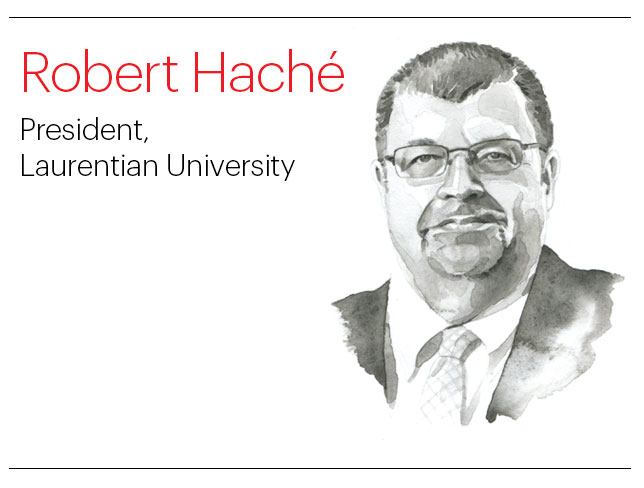
We brought together our infectious disease response planning group in mid-January, as the disease was making headlines in China, and we prepared to activate our emergency response plan if needed. We recognized – partly because of knowledge of retroviruses gained through my scientific career – that the key issue would be the nature of the virus’s transmission. We needed to be ready.
Late on March 10, Sudbury’s public health unit announced its first case: someone who worked in a provincial government building on Laurentian’s property, with connections to the university community.
We immediately called a meeting of our emergency management response team. About two-and-a-half hours in, it was obvious to me that we needed to move quickly to reduce the number of people on campus. I was assured that we had the IT capacity to transition rapidly to remote learning. We immediately suspended in-person classes and turned to remote learning the following day.
We held daily meetings initially, with leaders from around the university. We also spent a lot of time thinking about how to provide other valid means of instruction for students involved in off-campus activities and labs as part of their learning. We went through every aspect of the emergency – what was happening, what could we do, how were students reacting, how could we support them and faculty, how do we play a larger role in the region supporting the hospital and the health unit.
The early decision to suspend campus was a risk – we were the first Canadian public university to do so – but we could always return to in-person classes knowing we had made the best decision based on what we knew at the time. I’ve learned about the value of communication. I think we received such a positive response from day one because we focused on being as transparent as possible and sharing everything we knew with our community.
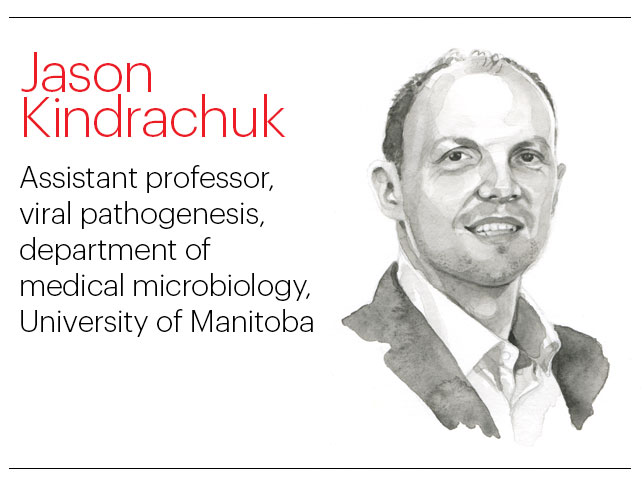
My first “lump in my throat” moment came in late January. I was leading a science outreach program for students in Nairobi, which is part of my ongoing work helping local partners in Kenya with viral preparedness and identifying long-term health complications in Ebola survivors. As the China lockdowns progressed, there was increasing uneasiness that Africa was in a precarious position if COVID-19 spread rapidly out of Asia. Throughout February, my lab, the Laboratory of Emerging and Re-Emerging Viruses, discussed what could happen if we saw the same spread in North America. The galvanizing moment for us was when the governor of Washington state announced a state of emergency on February 29.
Our lab focused on how we would ensure we were prepared for a potential long-term shutdown. My biggest concern was giving students a sense of comfort during such uncertainty. We knew that an open-ended closure could impact their ability to perform any lab work for an extended period, but I tried to reassure them that they would be protected in terms of time and stipends. I also had the unique privilege to use my voice and expertise to provide insights on COVID-19 to the public through the media. I have been humbled by the opportunity to give back, including through knowledge and conversation.
The most significant lesson I’ve learned so far is that when we consider emerging viruses, we have to continue to expect the unexpected. Viruses have been circulating in nature for long periods of time, yet our ability to predict their exact behaviour once they emerge is still in its infancy. I have also been amazed at the global research community’s response, utilizing social media and technology to provide continual global updates, independent of political or social differences. It’s been so inspiring to be a part of this.
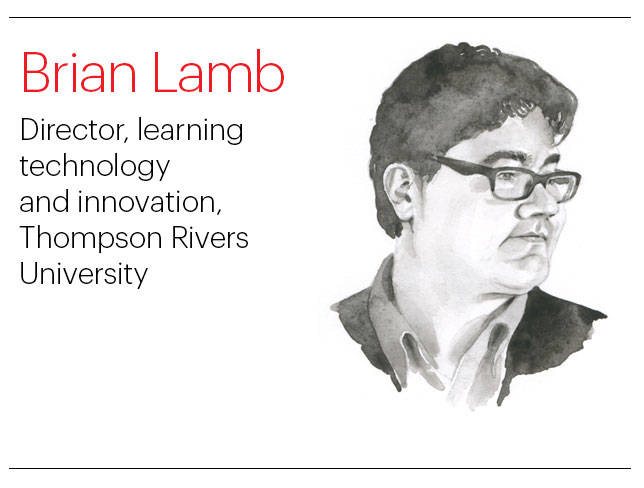
I was vacationing in Mexico in mid-February when I saw reports of international schools in China closing down. I remembered going through the SARS outbreak, at another institution, and suggested to my team that we prepare contingency plans. When I returned to work on March 5, it was clear some U.S. campuses would be closing, including nearby in Washington state, and we began preparing in earnest.
Our team fast-tracked planned system upgrades. Our IT colleagues significantly boosted our dedicated computing capacity. We created instructor help sites and tutorials for different online learning, meeting and video platforms. We also collaborated with other staff and departments to launch Pivot to Digital, an online resource with strategies for online teaching, learning and assessment through a student-care lens. When the in-class suspension was announced on March 15, we were terrified of what was to come but also felt we had done all we could to prepare.
We next set up online drop-in help sessions. We identified the “Faculty Avengers,” a group of confident users across the university, to provide peer support and quickly let us know of problems. We set up an internal work management platform and helped move our Open Learning division, so staff were ready to work remotely from home.
The pace was unrelenting. Mike Caulfield, director of blended and networked learning at Washington State University Vancouver, said something like, “Being an ed tech right now is like waking up every morning to a sewer backup and your apartment flooded.” It’s been like that, except it’s a different and equally unpredictable issue each day.
I’ve learned there is no technology or resource that means as much as having skilled, passionate people you trust working alongside you. The commitment and care among my colleagues and partners across the university has been an inspiration, even at the lowest points.
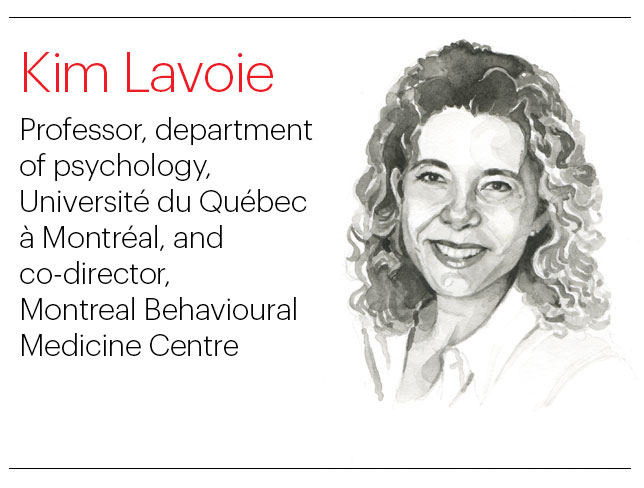
The research area for me and my husband [Simon Bacon of Concordia University] is behavioural medicine – preventing disease by motivating people to do things that may require some sacrifice. So, the virus was on our radar when news came out about it from China. One February morning I mentioned how the efforts to control it were entirely based in behavioural medicine and that we should do something on it. He was like, “We’ve got so much other work going on,” which we did, even though we were on sabbatical.
By the time of Quebec’s school spring break at the end of February, we suspected the virus could have a huge impact. We closed our lab March 12. Schools and universities were closed the end of the next day. On March 18, I woke up, rolled over and told my husband, “We need to do this.” We drafted the proposal the next day. We created a survey, piloted it and by the time we launched it on March 27, we had about 60 international researchers willing to collaborate with us; that’s more than doubled since.
The survey, the International COVID-19 Awareness and Responses Evaluation (iCARE), canvasses people’s behaviours and attitudes around the virus. We were overwhelmed by the response. The survey’s first wave received more than 35,000 responses from people in 143 countries. A second wave was planned for May. We’re working on making the data open-access.
We are so impressed and grateful at how the international research community wanted to help and came together so quickly and productively. I’ve also found that the far-reaching nature of COVID-19 has made me reflect on the research community’s priorities and how some things we have invested in for a long time maybe aren’t as important as we might have thought.
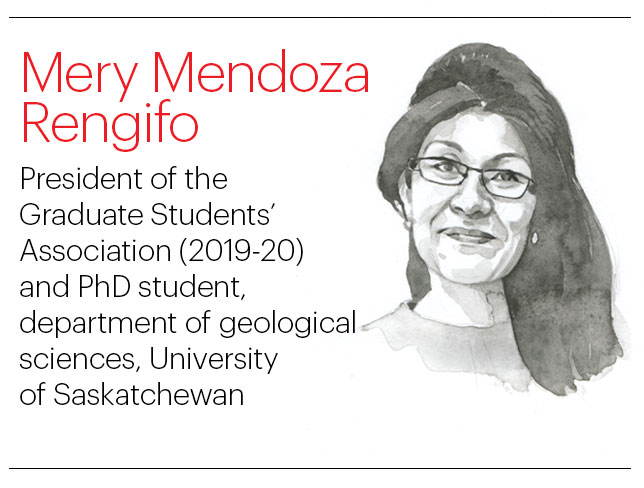
I started to realize the impact COVID-19 was having when I returned from a week-long research trip to San Francisco on March 9. There was a tense atmosphere at the university and in Saskatoon. But it wasn’t until the university sent an email on March 16 stating the campus would be closed until further notice that it dawned on me what a huge impact this would have on universities, especially on research. Research and academic progress have come to a standstill, severely affecting the global transfer of knowledge.
My work investigates the mechanisms by which mercury exerts its toxic effects. That research depends on access to the lab and to a research facility on our campus which provides a special kind of light source called a synchrotron. I use this to investigate how mercury binds to selenium at the molecular level. So, my ability to complete my experimental work properly is at a halt, which has been stressful.
The same is true for many other graduate students. As president of the GSA, I received several emails from students after the announced shutdown expressing concerns and asking for help. The GSA then sent a letter on April 6 to senior administration requesting universal support for graduate students. They’ve implemented some of our requests and we continue to advocate on students’ behalf. We also approved the implementation of Empower Me, which delivers counselling and other mental-health supports remotely and is much needed by our students right now.
As an international student from Peru, it has been extremely difficult not to have my family close by. This experience has shown me how important it is for students to have some kind of close-knit family, community or other support system in place to help them through difficult circumstances.
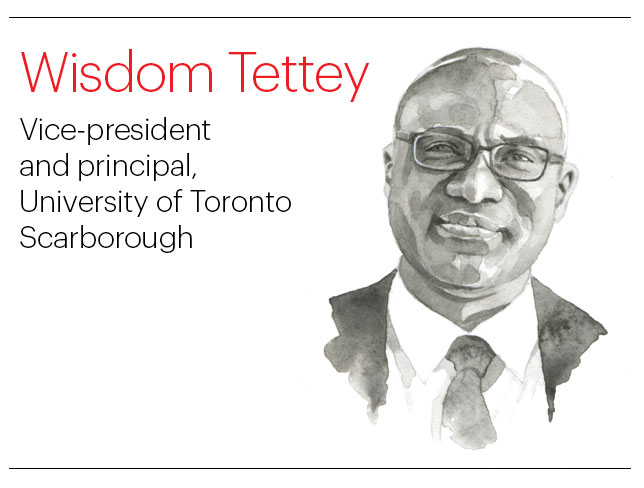
UTSC students who were in China and our recruitment teams alerted us in late December about the outbreak in Wuhan and what it might mean for their plans. We were also in contact with partner schools of our Green Path student recruitment program in China, and with other Canadian postsecondary institutions, while considering the advice of Canadian governments, public health authorities, as well as our own public health experts. That allowed us to anticipate the impact on our activities and plan for them.
In the new year, when it became obvious that a major crisis was in the offing, we activated emergency and crisis response protocols that have been in place for about a decade. Around mid-January, the university formed an incident leadership team of senior leaders who oversaw pre-planning for operations at U of T’s three campuses, including ours. At a campus level, we had an emergency response team that guided planning for academic and business continuity, crisis management and the implementation of health, safety and research protocols.
In the March crisis phase, we focused on supporting students and faculty to finish the term. A tremendous effort was required, with many individuals and teams working around the clock. This included moving about 6,000 courses online between March 13 and 16, across U of T. We provided access to internet resources for students who did not have them. We arranged for residence students to return home and facilitated the well-being of those who could not leave. We also instituted an emergency student support fund to assist with urgent student needs. Our health and wellness centre ramped up its services, including medical and counselling supports.
I have seen first-hand the value of preparation, long before a crisis occurs. Our emergency and crisis preparedness framework meant our actions were thoughtful, even in extreme circumstances.
